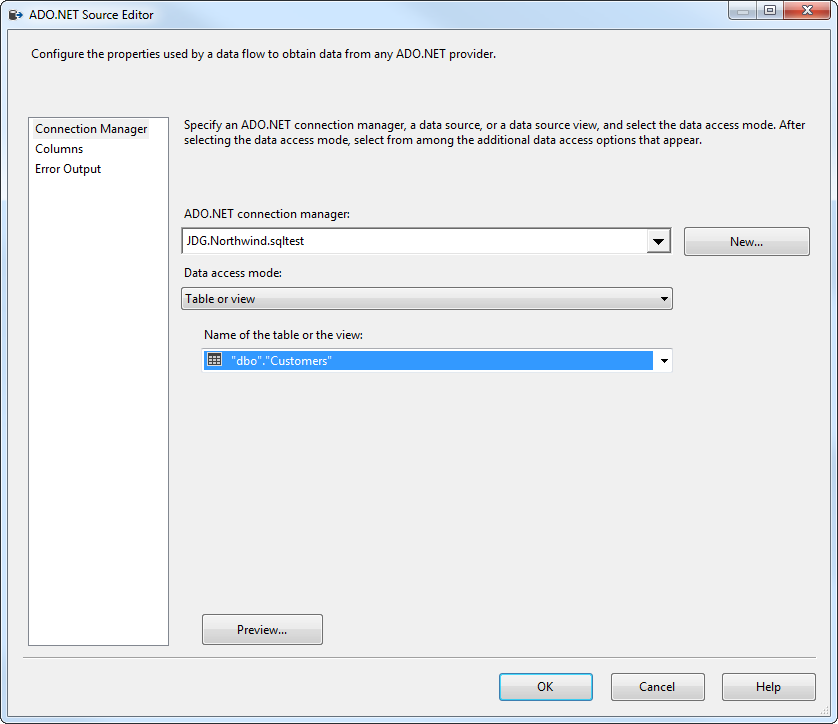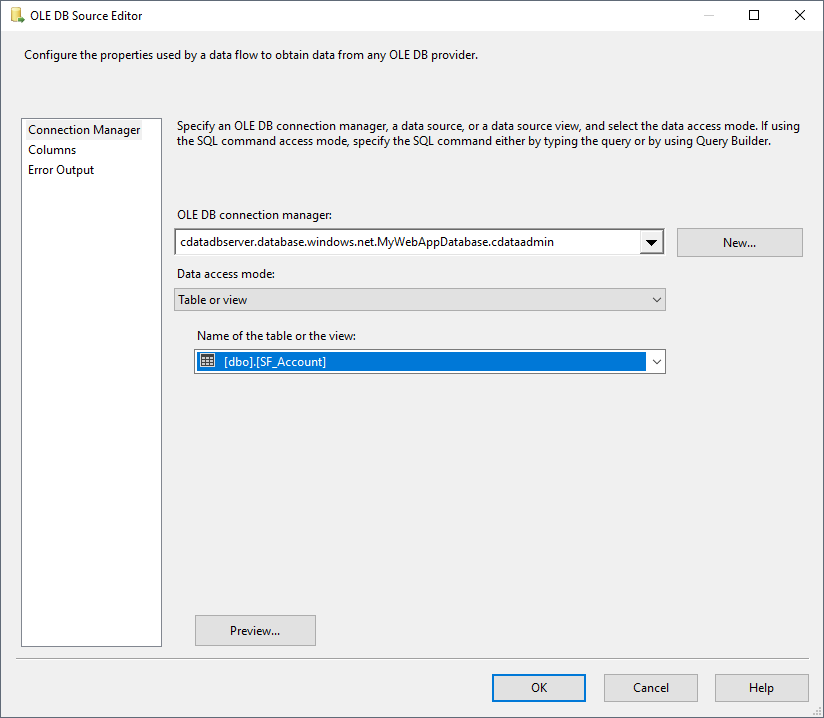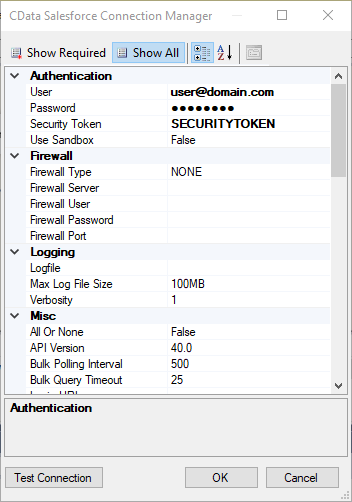Discover how a bimodal integration strategy can address the major data management challenges facing your organization today.
Get the Report →Export Data from SQL Server to Bullhorn CRM through SSIS
Easily push SQL Server data to Bullhorn CRM using the CData SSIS Tasks for Bullhorn CRM.

SQL Server databases are commonly used to store enterprise records. It is often necessary to move this data to other locations. The CData SSIS Task for Bullhorn CRM allows you to easily transfer Bullhorn CRM data. In this article you will export data from SQL Server to Bullhorn CRM.
Add Source and Destination Components
To get started, add a new ADO.NET Source control and a new Bullhorn CRM Destination control to the data flow task.

Configure the ADO.NET Source
Follow the steps below to specify properties required to connect to the SQL Server instance.
- Open the ADO.NET Source and add a new connection. Enter your server and database information here.
- In the Data access mode menu, select "Table or view" and select the table or view to export into Bullhorn CRM.
- Close the ADO NET Source wizard and connect it to the destination component.

Create a New Connection Manager for Bullhorn CRM
Follow the steps below to set required connection properties in the Connection Manager.
- Create a new connection manager: In the Connection Manager window, right-click and then click New Connection. The Add SSIS Connection Manager dialog is displayed.
- Select CData BullhornCRM Connection Manager in the menu.
-
Configure the connection properties.
Begin by providing your Bullhorn CRM account credentials in the following:
- DataCenterCode: Set this to the data center code which responds to your data center. Refer to the list of data-center-specific Bullhorn API URLs: https://bullhorn.github.io/Data-Center-URLs/
If you are uncertain about your data center code, codes like CLS2, CLS21, etc. are cluster IDs that are contained in a user's browser URL (address bar) once they are logged in.
Example: https://cls21.bullhornstaffing.com/BullhornSTAFFING/MainFrame.jsp?#no-ba... indicates that the logged in user is on CLS21.
Authenticating with OAuth
Bullhorn CRM uses the OAuth 2.0 authentication standard. To authenticate using OAuth, create and configure a custom OAuth app. See the Help documentation for more information.
Configure the Bullhorn CRM Destination
In the destination component Connection Manager, define mappings from the SQL Server source table into the Bullhorn CRM destination table and the action you want to perform on the Bullhorn CRM data. In this article, you will insert Candidate entities to Bullhorn CRM.
- Double-click the Bullhorn CRM destination to open the destination component editor.
- In the Connection Managers tab, select the connection manager previously created.
-
In the Use a Table, menu, select Candidate.
In the Action menu, select Insert.
![The destination table and action to be performed.]()
-
On the Column Mappings tab, configure the mappings from the input columns to the destination columns.
![The mappings from the SQL Server source to the SSIS destination component.]()
Run the Project
You can now run the project. After the SSIS Task has finished executing, data from your SQL table will be exported to the chosen table.









